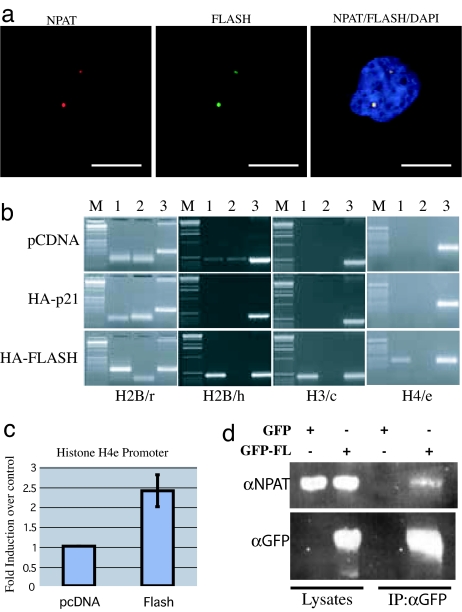Fig. 2.
FLASH interacts with p220/NPAT and binds to histone gene promoters. (a) Coimmunostaining by using anti-FLASH (green) and anti-NPAT (red) antibodies in SAOS-2 cells shows that the endogenous proteins colocalize (Scale bar = 5 μm). (b) Chromatin IP showing that FLASH binds to promoter sequences for histones: H2B/r, H2B/h, H3/c, and H4/e. Cells were transfected with either an empty vector (pCDNA3), with HA-FLASH (HA-FLASH), or with a vector coding for an unrelated HA-tagged protein (HA-p21). PCR was performed on DNA extracted from lysates subjected to IP with anti-HA antibody (lane 1) or with an unrelated anti-tubulin antibody (lane 2). As a positive control, PCR was performed on DNA extracted from untreated cells (lane 3). A positive PCR band appears only in HA-FLASH-transfected cells immunoprecipitated with anti-HA antibody but not in control-transfected or control-immunoprecipitated samples. (c) Luciferase assay on H1299 cells transfected with a luciferase reporter gene under the control of histone H4/e promoter sequence together with an empty vector (pCDNA) or HA-FLASH (FLASH). (d) HEK-293 cells were transfected with pEGFP or GFP-FLASH, and nuclear extracts were subjected to IP with anti-GFP antibody. Western blot against NPAT shows that endogenous NPAT coimmunoprecipitates with GFP-FLASH.

